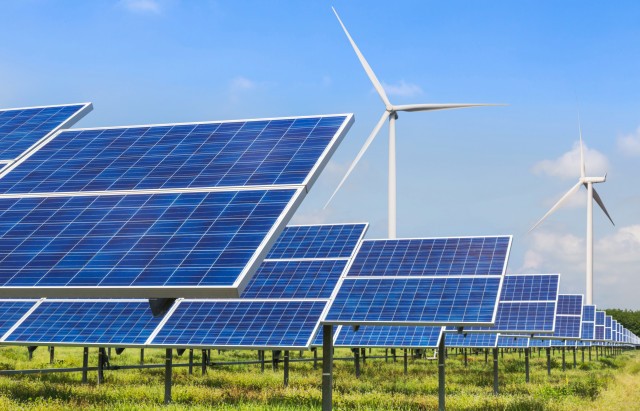The United States has been ranked as the most attractive market for renewables investment for the period ending December 2020, according to results from a new ranking by IHS Markit.
Germany and Mainland China are in second and third positions.
The IHS Markit Global Renewables Markets Attractiveness Rankings tracks attractiveness for investment for non-hydro renewables such as offshore wind, onshore wind and solar PV.
The United States claimed the top spot on account of sound market fundamentals and the availability of an attractive — though phasing down — support scheme.
Mainland China, which accounted for over half of the world’s total non-hydro renewables additions last year, has ranked third on the attractiveness ranking — just behind number two Germany — as difficulties in accessing the market weighed down its overall score.
The IHS Markit Global Renewable Markets Attractiveness Rankings utilize an integrated proprietary methodology to provide comparable views of 35 markets that are expected to account for 90 percent of non-hydro renewables capacity additions to 2030.
The ranking evaluates each country on the basis of seven subcategories that include the current policy framework, market fundamentals, investor friendliness, infrastructure readiness, revenue risks and return expectations, easiness to compete and the overall opportunity size for each market.
Each market is scored in individual categories for solar PV, onshore wind, offshore wind and an overall renewables score is calculated.
The overall country rankings are based on a combined score for offshore wind, onshore wind and solar PV that weights the different technologies based on their expected levels of installations over the next decade.
“Onshore wind, offshore wind and solar PV are set to account for over 80 percent of all new power generation capacity additions globally to 2030,” said Eduard Sala de Vedruna, executive director, global clean energy technology and renewables, IHS Markit. “While the lion’s share of 2020 capacity additions came from just two markets — China and the United States — close to 50 markets recorded double digit growth in the past year.”
France and Spain secured the fourth and fifth spot, respectively, based on strong market fundamentals backed by stable procurement mechanisms and long-term clean energy targets.
Similar factors also boosted the ranks of Japan (Rank 8) and the Netherlands (Rank 9), further supported by their strong impetus towards offshore wind — expected to be the fastest growing renewable energy technology in the next decade.
“The transition to competitive procurement and a growing need for grid-parity renewable power has forced investors to look beyond just financial incentives and focus on factors including economic stability, market liberalization and investor friendliness,” said Indra Mukherjee, senior analyst, global clean energy technology and renewables, IHS Markit.
Strong ambitions and stable procurement initiatives in India (rank 6), and availability of attractive subsidies and a high degree of investor friendliness in Australia (rank 7) propelled these markets to top spots on the list.
However, these markets are beginning to encounter infrastructure constraints on their continued path towards decarbonization. In the case of India, onshore wind build has suffered from lack of grid and land access, while in Australia the disconnection between federal and state ambitions have increased investor uncertainty.
United States also retained the top ranking in investment attractiveness for onshore wind and solar PV. The United Kingdom—which failed to crack the top ten in the combined rankings due to its relative lack of support for developing onshore wind and solar PV—ranked as the most attractive market for offshore wind investment.

